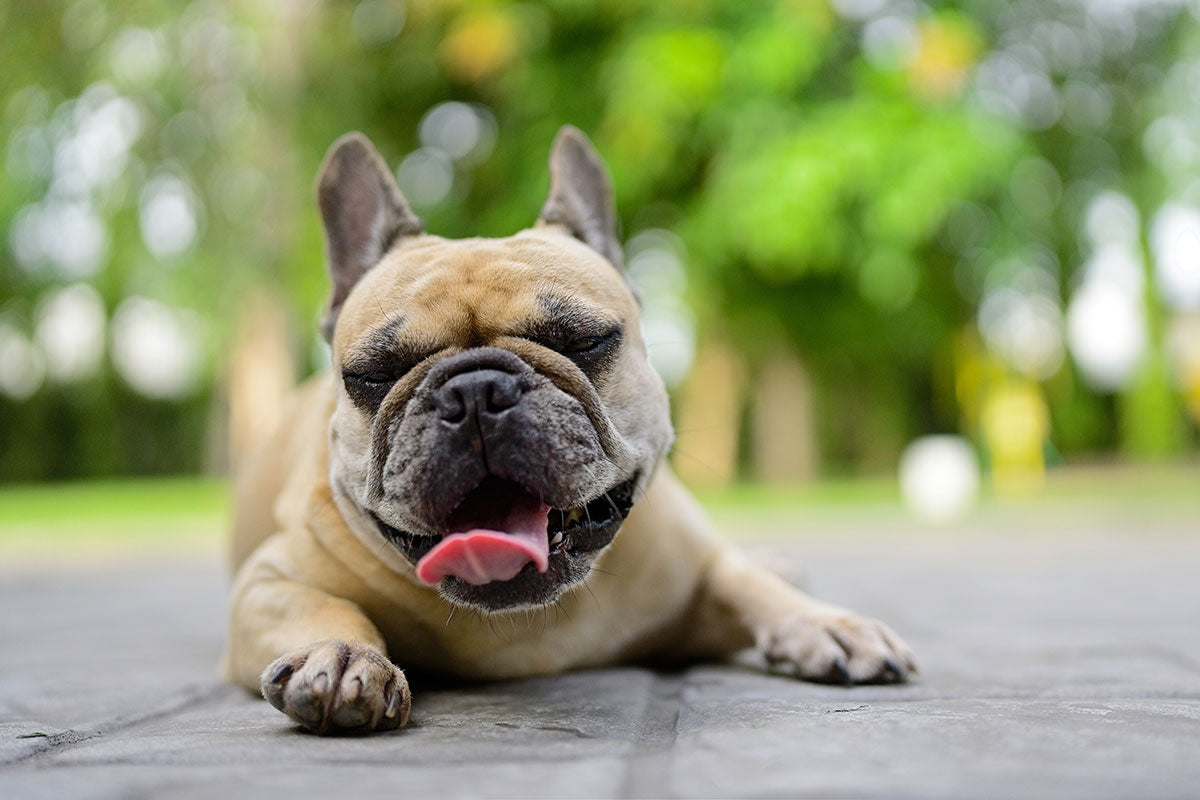Symptoms and Early Warning Signs of Heatstroke
Heatstroke is a serious condition that can affect dogs, especially during the hot summer months. Recognising the early signs is crucial for preventing severe health issues and ensuring your dog’s well-being. Here are some common symptoms to watch out for:
- Excessive Panting : Dogs pant to regulate their body temperature. However, excessive panting can indicate that your dog is struggling to cool down.
- Drooling : Increased salivation is a common sign of heat stress.
- Lethargy : An overheated dog may become unusually tired or weak.
- Vomiting or Diarrhoea : These symptoms can occur due to heat-induced stress.
- Bright Red Gums and Tongue : This indicates a high body temperature.
- Rapid Heart Rate : Feel for a quickened pulse, which can be a sign of overheating.
Recognising these symptoms early can prevent the condition from worsening. If you notice any of these signs, it’s important to take immediate action to cool your dog down and seek veterinary care if necessary.
Immediate Steps to Take If Your Dog Shows Signs of Heatstroke
If your dog exhibits symptoms of heatstroke, acting quickly can make a significant difference. Here’s what you should do:
- Move to a Cool Area : Get your dog indoors to a cool place, like an air-conditioned room or a shaded area.
- Offer Water : Provide cool, fresh water for your dog to drink. Avoid forcing your dog to drink, as this can cause choking or vomiting.
- Apply Cool Towels : Use wet, cool towels to lower your dog’s body temperature. Place the towels on your dog’s neck, armpits, and between the hind legs.
- Use a Fan : Direct airflow towards your dog using a fan to help dissipate heat.
- Avoid Ice or Very Cold Water : Do not use ice or extremely cold water, as this can constrict blood vessels and trap heat inside your dog’s body.
- Visit the Vet : Seek veterinary care as soon as possible, even if your dog seems to recover. Heatstroke can cause internal damage that may not be immediately apparent.
Long-term Prevention Strategies
Preventing heatstroke involves a combination of proactive measures and the use of cooling products designed to keep your dog comfortable during hot weather.
- Cooling Products : Invest in dog cooling jackets, cooling mats for dogs, and towels to help regulate your dog’s temperature. These products are designed with breathable materials and evaporative cooling technology.
- Hydration : Ensure your dog has constant access to fresh water. Consider portable water bottles for walks and outdoor activities.
- Shade and Shelter : Provide shaded areas in your garden or during outdoor activities. Portable shade structures or umbrellas can be very effective.
- Walks During Cooler Times : Schedule walks early in the morning or late in the evening when temperatures are lower. Avoid walking your dog during peak heat hours.
- Indoor Cooling : Use fans or air conditioning to maintain a comfortable indoor temperature. Create cool zones in your home where your dog can retreat to during peak heat hours.
- Cool Treats : Offer frozen treats or ice cubes to help lower your dog’s body temperature. These can be homemade using dog-safe ingredients.
- Avoid Hot Surfaces : Pavements and sand can become extremely hot and burn your dog’s paws. Stick to grassy areas or use protective booties to prevent injuries.
Understanding the Risks and Being Prepared
Heatstroke can occur quickly, especially during extreme weather conditions. Understanding the risks and being prepared can help you protect your dog from this serious condition. Here are additional tips to consider:
- Breed-Specific Considerations : Some breeds are more susceptible to heatstroke, particularly brachycephalic breeds like Bulldogs and Pugs. These dogs have shorter airways and can overheat more easily.
- Age and Health : Older dogs, puppies, and dogs with underlying health conditions are at a higher risk of heatstroke. Monitor these dogs closely during hot weather.
- Activity Level : Dogs that are highly active or working dogs may require more frequent breaks and access to cooling products.
By recognising the symptoms of heatstroke, taking immediate action during emergencies, and implementing long-term prevention strategies, you can ensure your dog stays safe and comfortable even during the hottest days. Always monitor your dog's behaviour closely and make adjustments to their routine as needed to keep them cool.


